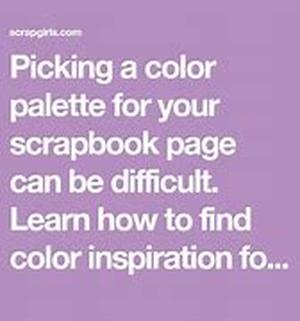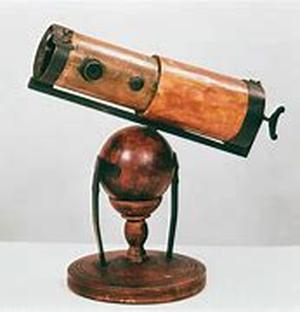
Like Most Comic Publishers I Spend Quite A Bit Of Time Thinking About The State Of The Industry And How To Make It Better Well, Truthfully, How To Make My Little Corner Of It Better. After Spending A Lot Of Time Thinking It Over And Discussing What Everyone Perceives To Be The Main Elements Leading To The Downfall Of Comics (the Distributor Monopoly, For Example), I Realized What The Biggest Problem And Killer Really Is: The Industry.I Believe Most Of The Problems That We Encounter In The Industry Come From The Industry Itself. First Off, Comic Companies Tend To Publish Only For Those Who Are Already In The Industry. Comic Publishers Usually Target Their Marketing Towards Those Who Are Already Here And Creators Tend To Create Product Only For Those Who Are Already Well-versed In Industry. Very Rarely Does The Thought Of Bringing New Readers In Really Ever Pop Up, Which Is Insane. That Would Be Like Hollywood Only Creating Films For Those Who Work In Film And Television. As Wacky As It Sounds, This Seems To Be The Mentality Of The Industry At Large.Magazines Like Cosmopolitan Are Fashion Magazines, But Their Audience Is The Average Woman (or Girl) Interested In Fashion And Not Members Of The Industry Itself. Their Advertising Stretches Beyond Fashion Industry Trade Publications And Into The Mainstream Itself, Where Its Buyers Reside. Why Short Sell Your Books Only To The 50,000 Or So Members Of The Active Comic Community And Not Go For Millions Of People Out There Who Enjoy Action Movies?Comic Publishers Arent The Only Ones To Blame, Either. Creators Themselves Are As Big A Deterrent To New Readership As Anything Else. If You Want To Know Why, Take A Look At A Modern Comic Versus One From As Late As Even The Mid Eighties And Youll See One Very Big Difference. No, Im Not Talking About Paper Or Printing Processes. The Art Itself Is The Main Problem With Comics. Solid, Clear Storytelling Has Become A Thing Of The Past. A New Buyer Will Find Most Modern Comics Unreadable Because The Solid Storytelling Of Days Past (along With Gutters Remember, Full Page Bleeds On Every Page Get Confusing) Is Gone.Do You Know Why A Lot Of New Readers Are Picking Up Manga Titles? Its Because They Are Easier To Read Than US Ones. Even With The Flipped Format, Most Manga Has Straight Forward Enough Storytelling That Even The Most Uninitiated Reader Can Follow What Is Going On And Which Panel Comes Next. This Cant Be Said About Most US Titles (indy Or Mainstream). The Fact That The Current Trend In The US Is For Over Rendered, Poorly Thought Out Computer Coloring, Doesnt Help Readability At All.Comics And Comic Art Have Become So Inbred The Only Ones Who Can Stomach Them Are Their Sister-mothers. But It Doesnt Have To Be That Way.The General Public Will Read Comics If You Can Get Yourself Out Of The Industry Mindset And Start Creating Comics For Readers Instead Of For An Industry More Interested In John Byrnes Latest Social Blunder Than In Buying Your Books.Some Places To Consider For Your Books (depending On Its Target Audience) Are Non-chain Book Stores, New Age Shops, Record Stores (Tower Is Starting To Have A Great Selection Of Indy And Small Press Zines), Libraries, Corner Markets, Magazines With A Similar Areas Of Interest, Schools, Local Area Mailer Compilations (such As The Little Coupon Books You Get In The Mail), Area Events (concerts Are A Great Spot), Swap Meets, Arcades Or Game Stores. There Is An Endless List Of Places That Might Be Willing To Carry Your Work If You Let Them Know Its Out There. You Might Have To Spend Some Money To Advertise. Get Used To It. The Old Adage, You Have To Spend Money To Make Money, Is True For Any Business.Here Are Some Tips For Making Your Books More Accessible To General Audiences:1) Market Your Books Outside Of Comic-specific Areas. Figure Out Who Might Be Interested In Your Book And Pursue Those Outlets. There Are Tons Of Places Out In The World That Would Be Willing To Sell Your Comicbut They Have To Know It Exists First. Ive Had Success At Art Festivals, Flea Markets, Record Stores, Sci Fi Magazines And More. Get As Creative With Your Marketing And Sales As You Do With Actually Producing Your Book. Its Worth The Extra Effort.2) Get Rid Of Full Page Bleeds On Every Page. Dont Be Afraid Of Negative Space Around Your Pages. It Will Actually Open Up Your Pages And Keep Them From Looking Cramped.3) Dont Forget The Gutters! Overlap Panels Are Interesting From Time To Time, But Gutters Help To Keep The Art Readable And From Blending Together. Theyre Also Great For Pacing In Your Storytelling.4) If Youre Going To Color Your Books, Dont Go For The Over-rendered Look That Most Comics Use. Its Muddy And Unclear. Look At Animation Or Places Like Disney Adventures For Reference On Coloring. Most Cartoony Books Are Well Colored Because They Want To Make Sure The Work Is Readily Accessible To Readers Of All Ages. Not Every Panel Needs To Be A Fully Digitally Painted Work Of "art."5) Think Of Storytelling. The Most Important Thing In A Comic Is That You Do Not Lose Your Audience. If At Any Point Your Readers Get Confused As To Where To Read Next, Then Youve Failed At Your Job As A Storyteller. And, Remember, Style Is No Excuse For Poor Storytelling (or Poor Artwork In General, But Thats A Rant For Another Time)6) Dont Have Large Blocks Of Text Or Dialogue In Each Panel. Theres An Old Unwritten Rule In Mainstream Comics (and One That Has Been Largely Forgotten Or Ignored): Never Have More Than 26 Words In Any Balloon Or Caption Box. Anything More Than That And The Words Will Run Together, Potentially Causing Readers To Skip Over Sections Of What Is On The Page.7) This One Is Going To Cause Any Comic Collector To Cringe: Get Rid Of Issue Numbers. Or, If You Just Have To Have Them, Place Them In The Indicia Only. Issue Numbers Are One Of The Big Obstacles For New Readers, Especially In Periodical Product Like Comic Books. A Reader Needs To Be Able To Come In On Any Issue And Not Have To Worry About Having To Read 10 Back Issues To Know Whats Going On. Sure You Can Let Them Know There Are Other Stories They Can Read (and, Which Will Be Available In Trade Paperback), But Dont Make Those Stories Required Reading. Follow Cosmos Lead (or Playboys) And Just Have The Month And Year On Each Cover. Comics Should Be Entertainment First And Foremost. Get Out Of The Collectible Mindset.8) Forget The Mantra, Comics Arent Just For Kids Anymore. Its Old, Played Out And Is Part Of The Death Sentence Of The Industry. Creators Have Spent So Much Time Trying To Prove That Comics Can Be For Adults That Theyve Forgotten To Build The Next Generation Of Fans By Only Making Comics For Older Fans Who Are Already In Comics. Without Young Readers There Is No Future In The Industry. As A Second Part Of This Thought, Just Because Your Comic Has Adult Language, Nudity And Graphic Violence Doesnt Automatically Make The Book For Adults. Vertigo And Ultimate Writers Take Note.9) Be Prepared To Get Your Hands Dirty And Do Some Work. Publishing Is A Business And, At First, You May Find Yourself Putting In As Much Time Marketing As You Do Creating. Thats Not A Bad Thing.My Heresy Will End With This Statement: The Only Way To Save Comics May Be To Let The Comic Industry, As It Exists Right Now, Shrivel Up And Die. Its On The Road As It Is, With Everyone Racing To Tear Whatever Pieces They Can Get From Its Still (barely) Living Corpse. The Industry Isnt The Heart Of Comics And Didnt Make Them, So Dare To Be Different. Put Down The Latest Issue Of The Comic Industry Death Watch, Wizard. Ignore The Party Line That An Indy Book Will Sell Less Than 250 Copies There Is A World Outside Of The Geppi Chokehold.A Bit Of Inspiration For You: Nifty's Main Title, The Cadre, Sells Over 5000 Copies Per Issue And 90 Of That Is Outside Of The Comic Industry. Not Bad For A Black And White, Mainstream Style Super Hero Comic.The World Is A Big, Beautiful Place Full Of Potential New Readers. You Just Have To Venture Out And Find Them.





